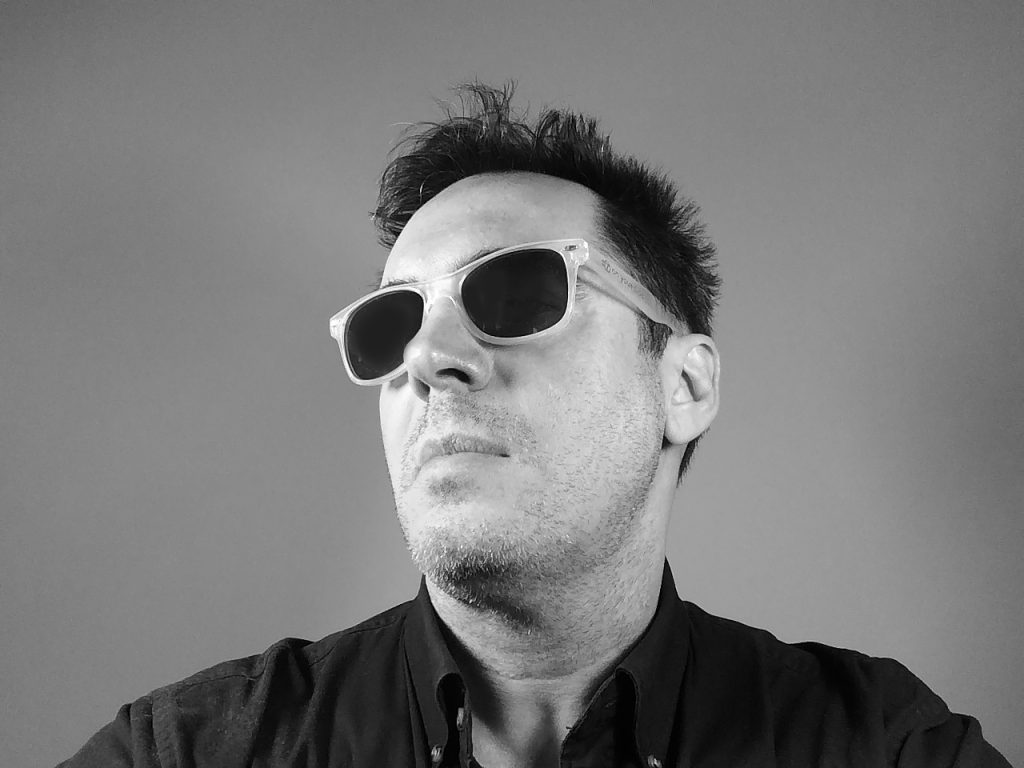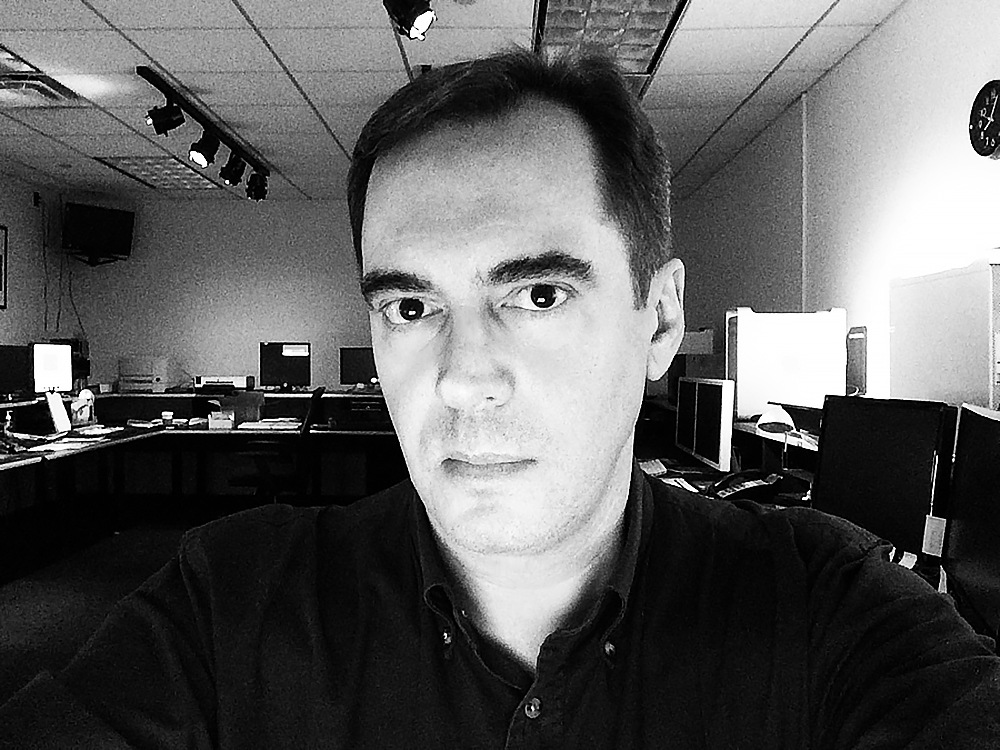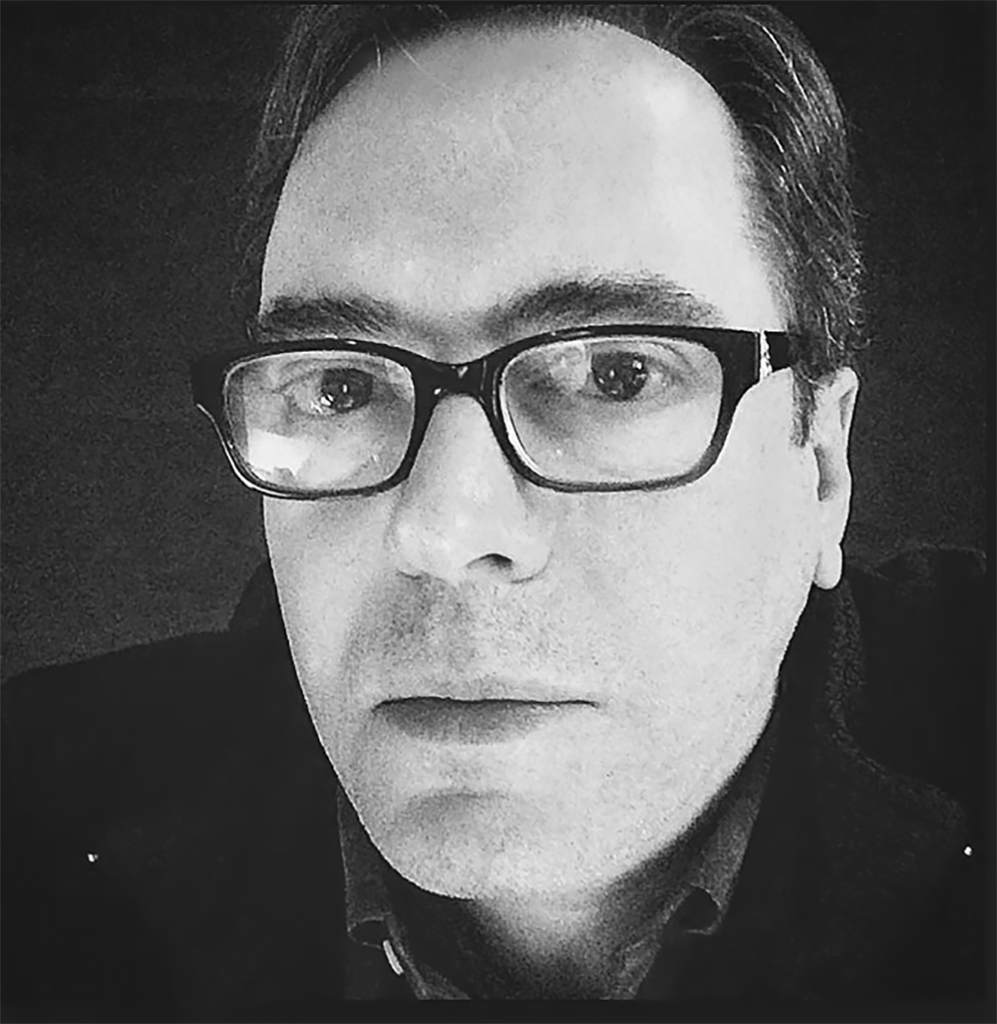
-Who is Arlin Godwin?
I’m a guy who makes things. Music, television, films, screenplays, photography, whatever strikes me at a given moment. I don’t think of myself as a consumer so much as an originator. A doer. A maker. A producer. A guy who wakes up in the morning, not thinking about money but what I might be able to write or shoot or compose today. What new thing will exist late tonight when I go to bed–that did not exist when I woke up this morning? I’m not really sure I even have a left brain. I think that side of my skull is most likely empty. I’m a right-brain creative maniac who can’t stop going from one project to the next. And sometimes this rubs people the wrong way. I’m always having to say “I’m sorry” because my only real interest is the movie I’m working on or the piece of music I’m composing. I’ve written hundreds of pieces of music. Worked on thousands of TV shows. Written 4 feature screenplays so far, made 5 short films–my latest being STOP TAKING PICTURES with producer Trevor Taylor. I’ve worked in television in Washington, DC for 40 years. Right now, in my 24th year at a huge network-affiliated station in DC, and when I’m not doing that, I make short films. Right now, I’m preparing to shoot my first feature.
-Do you remember the exact moment you fell in love with cinema?
My mother’s father was a film fanatic and shot a lot of stills, owned many cameras and lenses and when I was about 10 years old he gave me a Bolex 8mm camera and a small yellow foil package containing I guess 25 feet or maybe it was 50 feet of 16mm film–good old Kodachrome reversal stock–which would later be split down the middle in processing and become 8mm. The smell of that package of film stock put the hook in me. And then the process of threading the camera and closing the door tightly was preparation. After that, it was just a matter of figuring out what I wanted to shoot.

-Tell us about your project “Stop Taking Pictures”.
I live and work in Washington, DC, and we have a fantastic public transit system. It seriously looks like something Kubrick would have built for 2001! Brutalist architecture. Massive in size. With neoclassical elements mixed in. And I would ride the trains underground twice a day…and often think about the dark tunnels and the accidents that perhaps had happened over the years. And I began to have this idea of a photographer who shoots random images in the subway system, sometimes maybe out the windows of fast-moving trains. Later, he would scroll through his pictures and see orbs of light and ghosts. I was captivated for years by the concept of setting a supernatural story in a high-tech modern environment. In July of 2024, I wrote the screenplay. Twenty-two drafts. In January 2025, my producer, Trevor Taylor and I cast actor Joseph Groth in the lead role, with his strange and possibly dangerous wife played by actress Lina Romero. We shot the movie in various locations in Virginia across the Potomac, in Georgetown, very close to the famous Exorcist Steps. We used the Blackmagic 6K cinema camera but also did a lot of shooting on a smartphone–the Samsung Galaxy S23 Ultra in 8K. The phone allowed us to look like tourists when we were in the subway system, and we were never bothered by security or had any problems, largely for that reason. We just blended in and got our shots! I then edited using Premiere Pro, wrote the music, and did sound and effects work alone for about 5 months on weekends. The film just debuted and immediately became an Official Selection at 4 international festivals, with another 70 festivals considering.
-Which Director inspires you the most?
Do I have to pick only one? Stanley Kubrick does it for me. Absolutely. The greatest. But I’m a huge fan of David Fincher. And I grew up in the late 60s and 70s, so Pakula, Lumet, Copolla, Polanski, De Palma, and of course Spielberg are also huge influences. Hitchcock is a special case. How could he not be? A man who added to the language of cinema–literally solved problems in very interesting ways and expanded what movies could be. However, these days I’m also influenced hugely by female directors such as Campion, Copolla, Bigelow. I loved Emerald Fennel’s SALTBURN. I also think that often films made by women are just fresher. Different points of view. They can show us the world the way they see it, and as a guy, I enjoy that. I want to be surprised, and a lot of the time it’s the ladies who are doing that.

-What do you dislike about the world and what would you change?
I greatly dislike that even today, people judge one another based on superficial outward appearance–on skin color, differences in our hair, eyes, or the shape of our faces. Or on a person’s age. Differences are not what we should be focusing on. Similarities and commonalities have so much more to offer us all. We’re much more alike than we are different.
-How do you imagine cinema in 100 years?
Probably, cinema in 100 years will maybe be more of the audience participating in the story of the film or movie or whatever we call it then. Inside the story! Who says you can’t become a character within a story? You could get eaten by a shark. Or have a lightsaber duel with Vader. I definitely think cameras will get even better, and the ability to present stories in a wrap-around 360-degree format will probably be common. The reason I think this is because it’s what people want. They don’t want to sit passively by. They want to be in the movie with the actors.
-What is your impression of WILD FILMMAKER?
The biggest thing I was struck by with WILD FILMMAKER when I first encountered the site was the concept of a post-cinematographic era. Which kind of clicks with my predictions about the future of cinema becoming more participatory? The interviews on the site are excellent, and the spare, black and white look is awesome. But that philosophical point of view is what sticks out to me. Everybody has a smartphone. A lot of people have actual cinema cameras at their disposal because you can buy an FX30 for a couple of thousand and make THE CREATOR with it. Ridley Scott shot a short film for Samsung on the same phone/camera we used on STOP TAKING PICTURES. And that tiny little phone shoots 8K resolution! So, WILD FILMMAKER’s foundational tenet that the world is not what it was 100 years ago and that everyone now possesses the ability to tell a story their own way—is revolutionary. And I, for one, can’t wait to see what the revolution brings!

